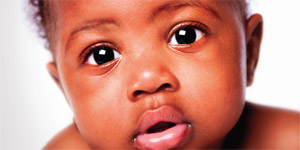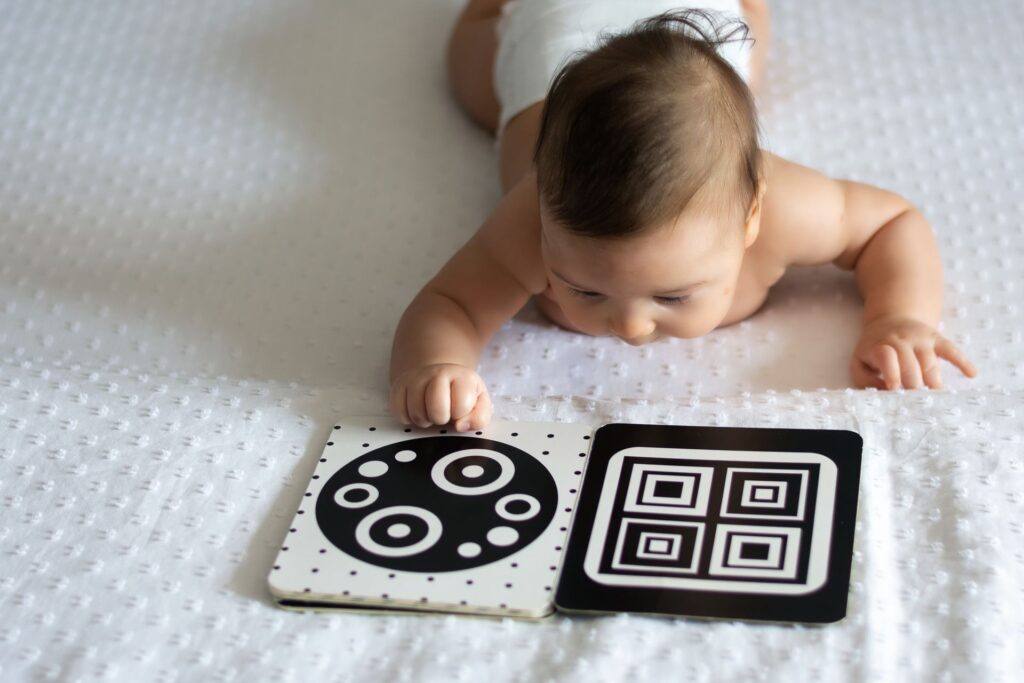
Even before your baby can read the eye chart, they should have a visit with an optometrist. The Canadian Association of Optometrists recommends babies have their first routine screening at six months. “We want to make sure that things are developmentally on track,” says North York optometrist Dr. Beth Schellenberg.
Although infants can’t report back what they can or can’t see, Dr. Schellenberg says optometrists are able to get a lot of feedback just from looking at your baby’s eyes to test muscle coordination, detect any health issues and even determine if your little one needs glasses. The early eye exam is a great way to get Baby’s eyes on the right track. “The earlier that you can detect any issues, the earlier you can receive treatment,” says Dr. Schellenberg.
Booking an eye exam
Not all optometrists will do screenings on your six-month-old. Confirm when you call to make an appointment for your child that the optometrist you've selected is trained in performing eye exams on infants.
The exam
Typically, your child will sit in your lap while the optometrist is performing the eye exam, which can last anywhere from 15 minutes to an hour depending on whether eye drops are used to dilate the eyes.
The optometrist will look for three major things – muscle alignment, the health of the eye and the prescription.
- Muscle alignment – “The eyes should be working well as a team by the time the baby is six months old,” says Dr. Schellenberg. She uses a light-up toy that rotates to see how Baby’s eyes are moving. The eyes should be moving in the same direction together and not turning in or out, a condition called strabismus. “What can happen is one eye can have a tendency to turn in towards the nose or out towards the ear while the other eye stays straight. That can cause a lazy eye in the long term,” says Dr. Schellenberg.
- Prescription – The optometrist will use a retinoscope to see how light reflects in the eye. Different lenses are placed in front of the eye while the optometrist watches how light reflects in the eye to determine the child’s prescription.
- Eye health – An ophthalmoscope is then used to check for any eye health problems. In some cases, the optometrist may put drops in the child’s eye to dilate the pupils. The drops do cause the eyes to sting for a few seconds and can be uncomfortable for the baby. They also cause Baby’s eyes to be extremely sensitive to light, so Dr. Schellenberg recommends parents bring a pair of infant sunglasses or a wide-brimmed sunhat to protect Baby’s eyes from the sun outdoors when they leave the office to go home.
The follow-up
If Baby’s eyes appear normal, Dr. Schellenberg recommends the child receive annual eye exams. In many provinces, health care plans cover annual eye exams for children up to the age of 18.
How to protect young eyes
It’s never too soon to think about protecting your child’s eyes.
Limit sun exposure and screen time
“Babies’ eyes are especially susceptible to damage from U V rays as well as from blue light emitted off of LED back-lit screens,” says Burnaby, B.C. optometrist Dr. Jessica Ng. This is because the lens inside a baby’s eye is crystal clear while an adult’s lens gradually becomes more cloudy with age. “That means more U V and blue light is able to pass through into a baby’s eye,” she says. Dr. Ng recommends 100% UV protective sunglasses as well as a hat in the summer and limiting screen time on tablets and smartphones for any child under the age of two.
Spend time outdoors
“Too much indoor time has been linked to the rise of nearsightedness in developed countries where the emphasis has shifted to more indoor time versus play time outdoors for young children,” says Dr. Ng. Give your child lots of time outdoors, with sun protection of course.
Eat the rainbow
Fruits and vegetables that are bright in colour are important for the development of healthy eyes. Dark leafy greens such as spinach, kale and swiss chard are high in antioxidants and protect the macula. Omega-3s from fish are also important for the development of your child’s vision system.
Originally published in ParentsCanada magazine, June 2015.










